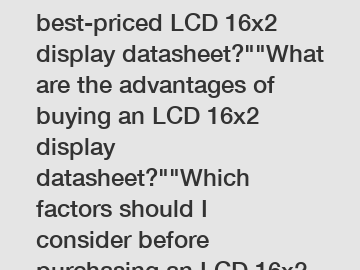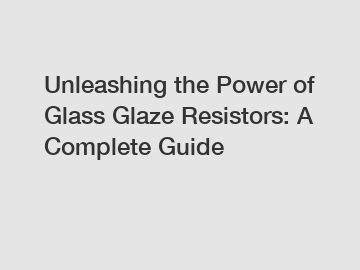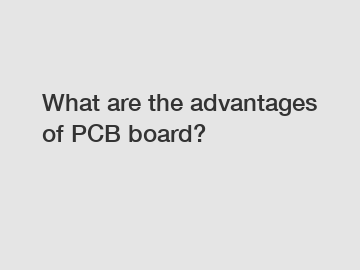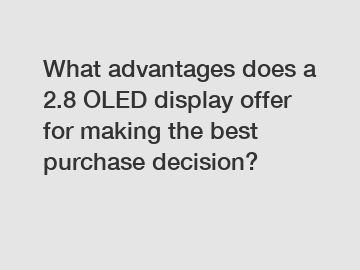5 things you need to know about the rental LED display
5 things you need to know about the rental LED display
In recent years, the flourishing AV industry market demands more and more rental led displays than ever before. One reason is that LED display as the current best digital equipment to deliver high-performance image and video has gained increasing attention and recognized by the matured rental markets. Another reason is the rapid development of LED technology.
If you are looking for more details, kindly visit Lucky.
When it comes to living production or entertainment activity, JDX Stage LED screen rental solution is capable of creating an engaging and dynamic atmosphere for your event by providing high quality LED rental displays, LED screens for events excellent visual solution, and an understanding of this extremely demanding industry.
Here are 5 things you need to know about the rental LED display. It might help you understand better the rental LED display from the perspective of an experienced manufacturer.
Part 1: What is the rental LED display?
Rental led display literally means the LED display for the rental market. It is also called led display rental or led display for hire. Literally speaking, it should include all the LED displays which are rentable such as permanent installation LED billboard display for advertising, mobile LED display trailer for live broadcasting and even perimeter banner LED video display, etc.
But the definition of rental LED display from manufacturers is slightly different. It is opposite to the fixed installation led display and is narrowed to refer to such an LED display with the very lightweight, slim and sleek panel, support fast set up and dismantle, and could be removable. For instance, the led display for the concert, mobile stage background, and music festival where the LED display just is there for a few days or a certain period, then it will be taken down and transported to other locations for new events.
Part 2: Types and applications of rental LED display
Defined by its application environment, the rental LED display is divided into indoor rental LED display and outdoor rental LED display. Normally, for the same series rental LED display, both indoor and outdoor models share the same panel design and could be installed on one screen.
Indoor rental LED display is usually used for indoor events like exhibition, award ceremony, fashion show, car show, wedding and conference room etc where require no waterproof on the LED display and no need high brightness. But the led display has to be qualified to deliver the high definition image quality and superb visual performance.
For these indoor events, the market trend goes to the lower and lower pixel pitch. It went to 3.9mm years ago but now is 2.9mm or 2.6mm even lower pitch. The main reason is that the clients are always expecting a better and clearer image for their spectators. If your rental LED display is with a lower pixel pitch than others, then you will be much competition on the market. It is the nature of the market and competition.
Outdoor rental LED display is widely used for outdoor events like sports venues, touring, concert, music festival, etc where to require the LED display has to be waterproof (IP65 or IP54) and high brightness (more than nits). Considering the viewing distance, such outdoor events are not very picked on the pixel pitch but pays more attention to its durability and stability. The demand of the current market is 3.9mm and 4.8mm, but it will go to lower pixel pitch in the near future for sure.
Part 3: Advantages of rental LED display
Speed and efficiency are two vital elements of AV rental companies. When referring to event preparation, it is normally an integration of many different types of equipment like audio, video, lighting, truss frame, stage set-up, chairs, carpets, etc. All this stuff has to be arranged and configured ready before the event within a very limited working time.
As the key video equipment of rental event, the rental LED display has to be with the following features:
Easy and fast to install and dismantle, saving working time and labor cost
Can do creative setups for specific events, flexible to different applications
Robust and reliable weight capacity when used as suspension, safety comes first.
Can be maintained easily if failure happens.
Rental LED display plays an important role in a successful event, interacting with stage lighting and fireworks, it makes the event more appealing and engaging and delivers an immersive visual and sound experience to the attendees. That is why we can always see a lot of giants LED rental displays on big concerts and music festivals.
Part 4: Installations of rental LED display
A good concert rental LED screen not only gives the audience a good visual experience but also adds to the overall theme of the stage. There are three common forms of rental LED screen design for concerts today. Let's take a look at the following:
According to the framework of the stage, the concert rental LED screen is the main stage, and the stage of the position of the light is left around the screen of each unit.
Such a stage is also quite common, and the stage structure of the stage is built in a deep manner. The screen is suspended on the stage frame, and a computer light is hung between the screen and the screen. It is the depth and patchwork of the screen that leads to the disappearance of the stage to the far side, so that the depth of field of the whole picture becomes longer, resulting in a strong perspective effect, and leaving space for so many lights hanging and playing on the side. the whole stage also has a good atmosphere and dynamic, and also expressed the theme of this party. However, the stage structure will appear to be relatively simple and not vivid.
Second: the concert rental LED screen as the "center" of the stage, or the background of the stage, plus the front of the real scene, the composition of the stage set.
Third: The big screen is used as the whole stage of the concert stage design. The large screen design is the background and the side curtain. The space-time in the scene makes the big screen complete, and the actors do the physical performance.
This kind of scene is used in many places. Of course, it has its advantages, that is saving money. A picture, the things that should be explained in the plot can be explained. A video screen can bring out the whole form of the program, especially some local TV stations, bought a big screen, saving a lot of dance costs.
However, in doing so, it will inevitably lead to the conceptualization of the entire stage. Today, we will play a rural scene, change the background of the farmhouse picture, play the city tomorrow, change the picture of the high-rise building, and move the music to the stage, and put a dynamic abstract pattern. Without the characteristics of the stage, the stage is also very thin and has no three-dimensional sense. When the audience is slightly angled, they will see a plane, and maybe some reflection.
From a long-term perspective, the stage is both overall and atmospheric, but from a close-up view, the rental LED screen of the concert will inevitably appear grainy and unrealistic, resulting in a separation effect, and there is still a lack of lighting design. The space for playing is too small. Because it is a box-type set, the position for lighting installation is extremely limited. Therefore, there will be a lack of atmosphere light and ambient light on the stage, which will make the stage lack the atmosphere of the scene. Such a stage is expensive, and it is difficult to present a perfect stage effect by simply using a stage to rent a LED display.
Therefore, the above three common design forms have their own advantages and disadvantages, and which method should be used in combination with the concert scene and the stage environment.
Part 5: Peripheral equipment for rental LED display
Somehow, the rental LED display still belonging to the category of the monitor. It is capable of showing any kind of content. But it can only receive certain kinds of signals. Therefore, you should buy other equipment according to what signals will be connected to the LED display. Here are some peripheral devices for the rental LED display.
Video processor:
A video processor is key equipment for rental events. At first, it should convert other input signals into the ones LED display accepts. For example, live broadcasting from the camera. Besides, the video processor can easier your content management and create more eye-catching effects on the LED display.
Splicing processor
Besides, the video processor can easier your content management and create more eye-catching effects on the LED display.
Road case
As to rental events, road case or flight case is essential for fast packing and quick transportation. Normally, factories pack the rental LED display with a flight case. But it is ok if you would like to use your own flight case.
Are you interested in learning more about led screen solutions? Contact us today to secure an expert consultation!
Explore more:LCD - Epidural Steroid Injections for Pain Management
How do you use OLED display?
Everything You Need to Know About JHD Displays: Specs, Features, and Benefits
The Ultimate Guide to TFT LCD Panels: Everything You Need to Know
Revolutionizing Gaming: OLED 64 vs Traditional Displays?
Revolutionize Your Device with 2.89 Inch PMOLED Display Customization
Everything You Need to Know About 10 Inch LCD Screens
Power distribution unit
Power cable layout sometimes is like a pain in the ass when it comes to a big LED display. Imagine a rental event that demands a huge LED display, but power interfaces are 20-50meters away from the LED display. If you don't have power distribution units, power cable layout will be big trouble. But things are different with power distribution units even if there are very limited power interfaces available on site.
Part 6: What needs to be considered before investing a rental LED display
When referring to the installation project, the requirements are set before the project get started and applied only to the project. But things are more complicated when you are going to be involved into the rental market as a green hand or planning to invest a rental LED display for one specific event.
Before taking any action, here are the two most important things you need to do: collect detailed market information and estimate your business scale.
Detailed market investigation
If you are a newcomer to the rental market and willing to invest one LED display to start your business. These questions may help you get general information about the market.
Who are the players on the market, what is their main business, and what pixel pitch LED display they are using?
What are the market segments you want to step into, who will be your competitors, and what is your advantage to beat them?
What rental price the clients willing to pay for the service, how long you can cover the cost and make a profit?
If you have very clear answers to these questions and still willing to step into the market, then you will know what is the best LED display for you.
Estimate your business scale
No matter you are investing a LED display for one specific event or for your growing business, you need to make a prediction on your business scale. For instance, if you are asked to supply a 50sqm rental LED display for one event and you will still use it after that. Then how many square meters you will purchase?
Before answering this question, you should be aware of one fact about LED display, it is the batch problem. If you buy a LED display now and months later you want to buy more to match your current LED display for bigger events, then you will find out that they can't be used in one screen. Because they are from two batches LEDs which with different color and brightness. Such a situation happens quite often.
Comes back to that question, you will now have a more practical answer after looking back at your past events and making a prediction about your business scale in the near future.
Shenzhen JindaxiangTechnology Co., Ltd. is specialized in LED screens, integrated with scientific research, design, production, maintenance, sales, and system integration. We design complete LED technology solutions for stages across the world, exquisite broadcast, and architectural installations.
What's the next topic you want to know about the led screen? Feel free to contact me at and free call on , Skype at .
Top 10 Considerations Before Buying a Church LED Wall
Last updated in April .
In recent years, LED walls have become a popular choice for churches looking to enhance their worship experience. LED walls offer a range of benefits, including superior image quality, flexibility in design, and energy efficiency. However, purchasing and installing an LED wall can be a significant investment, and there are many factors to consider before making a decision. In this blog post by The Penn Group, we'll explore the top 10 items that need to be considered when purchasing and installing an LED wall for a church.
Lets Keep In Touch
1. Purpose and Vision:
Before purchasing an LED wall, it's essential to consider the purpose and vision of the church. What type of content will be displayed on the LED wall? Will it be used primarily for worship services, or will it also be used for events and concerts? Understanding the church's vision and goals will help determine the size, resolution, and configuration of the LED wall. Before purchasing an LED wall, it's important to understand the church's purpose and vision. Churches use LED walls for a range of purposes, including displaying worship lyrics, sermons, live streams, and visual aids. Consider the specific needs of the church and how an LED wall can enhance the worship experience. It's also essential to consider the long-term vision of the church. Will the LED wall be used for events and concerts in addition to worship services? Considering the church's purpose and vision will help determine the size, resolution, and configuration of the LED wall.
2. Location and Viewing Angle:
The location of the LED wall and the viewing angle are crucial considerations when designing and installing an LED wall. Consider the size and shape of the worship space, as well as the distance from the LED wall to the congregation. It's essential to ensure that the viewing angle is optimal from every seat in the house. The optimal viewing angle for an LED wall is 0-30 degrees. It's essential to ensure that the viewing angle is optimal from every seat in the house. If the LED wall is not positioned correctly, the content displayed on the screen will appear distorted and difficult to read. When installing an LED wall in a church, one important consideration is whether to fly or ground stack the LED wall. Flying an LED wall means suspending it from the ceiling or rigging, while ground stacking involves placing the LED wall on a ground support structure. Both options have their advantages and disadvantages, and the choice largely depends on the church's needs, budget, and available space. Flying an LED wall has the advantage of freeing up floor space and providing a better viewing experience for congregants. It also allows for greater flexibility in terms of the placement of the LED wall, as it can be hung in different configurations. However, flying an LED wall requires careful planning and installation by a professional rigging team to ensure that it is properly secured and will not pose a safety hazard. Additionally, it may be more expensive than ground stacking due to the cost of rigging equipment and labor. On the other hand, ground stacking an LED wall is a simpler and more cost-effective option, as it does not require the use of rigging equipment or a professional rigging team. It also allows for easier access to the LED wall for maintenance and repairs. However, ground stacking may take up valuable floor space in the worship space, which could be a concern for churches with limited space. It also may not provide an optimal viewing experience for congregants, especially those sitting further back in the worship space. Ultimately, the decision to fly or ground stack an LED wall depends on the church's specific needs and preferences. A professional AV integrator can help evaluate the available space, budget, and viewing requirements to determine which option is best suited for the church's LED wall installation. Additionally, it is important to ensure that the installation is done safely and complies with all relevant safety regulations, whether the LED wall is flown or ground stacked.
The size and resolution of the LED wall will depend on the church's purpose and vision. A larger LED wall will provide more significant impact, but it will also be more expensive. It's important to consider the pixel pitch (the distance between each LED light) to ensure that the resolution is optimal for the viewing distance. The ideal viewing distance and wall size are crucial factors that need to be considered when purchasing and installing an LED wall for a church. Pixel pitch is the distance between each LED light on the LED wall and is measured in millimeters. The smaller the pixel pitch, the closer the LED lights are to each other, resulting in higher resolution and clearer images. On the other hand, a larger pixel pitch means that the LED lights are further apart, resulting in a lower resolution and less clear images.The ideal pixel pitch and viewing distance for an LED wall depend on the size and purpose of the LED wall. For a large LED wall that is intended to display high-quality images, the ideal pixel pitch is smaller, ranging from 1.5mm to 2.5mm. On the other hand, if the LED wall is intended for displaying simple text or graphics, a larger pixel pitch of 3mm to 6mm may be more appropriate. The ideal viewing distance for an LED wall also depends on the pixel pitch and the size of the LED wall. The viewing distance is the distance between the LED wall and the viewer. For an LED wall with a smaller pixel pitch, the ideal viewing distance is closer to the LED wall. For example, an LED wall with a 1.5mm pixel pitch is ideal for viewing at a distance of 3 to 5 meters. On the other hand, an LED wall with a larger pixel pitch is ideal for viewing at a further distance. For example, an LED wall with a 6mm pixel pitch is ideal for viewing at a distance of 10 to 20 meters. It's essential to choose the right pixel pitch and viewing distance for an LED wall to ensure that the content displayed is clear and readable for all viewers. Choosing the wrong pixel pitch or viewing distance could result in distorted images or difficulty reading the text. Therefore, it's important to work with a professional AV integrator to determine the ideal pixel pitch and viewing distance for the LED wall based on the church's purpose, vision, and worship space.
4. Budget:
LED walls come in a range of sizes, resolutions, and configurations, and the cost can vary significantly. It's essential to establish a budget early in the planning process to ensure that the LED wall meets the church's needs and fits within the budget. When considering the budget for an LED wall installation in a church, it is important to take into account the electrical requirements of the LED wall, as well as the cost of additional power that may be needed. LED walls require a significant amount of power to operate, and this can result in higher energy bills if the church's existing electrical system cannot accommodate the LED wall's power needs. The first step in determining the LED wall budget is to assess the church's existing electrical infrastructure and determine whether it can support the LED wall's power requirements. This may involve hiring an electrician or AV integrator to perform an electrical load analysis, which will help determine whether the existing electrical system needs to be upgraded or modified to accommodate the LED wall's power needs. In addition to the cost of any necessary electrical upgrades, it is also important to consider the ongoing cost of additional power needed to operate the LED wall. LED walls can consume a significant amount of power, especially if they are large or have a high pixel density. This can result in higher energy bills, which should be factored into the overall LED wall budget. One way to reduce the cost of additional power is to invest in energy-efficient LED wall technology. LED walls that use lower power consumption technology or are designed with power-saving features can significantly reduce the amount of power needed to operate them, which can result in lower energy bills over time. Another factor to consider when determining the LED wall budget is the cost of any additional equipment needed to support the LED wall's power requirements. This may include additional power outlets, surge protectors, or other electrical components that are needed to ensure the safe and reliable operation of the LED wall. Finally, determining the LED wall budget for a church installation requires careful consideration of the LED wall's electrical requirements, as well as the cost of additional power and any necessary electrical upgrades or modifications. It is important to work with a professional AV integrator or electrician to assess the church's existing electrical infrastructure and ensure that the LED wall installation is safe and compliant with all relevant regulations. By taking these factors into account and investing in energy-efficient LED wall technology, churches can ensure that their LED wall installation is both cost-effective and sustainable in the long term.
5. Video Control System:
LED wall processors, such as Novastar, are an essential component of LED walls in churches. They are responsible for processing and controlling the display of images, videos, and other multimedia content on the LED wall. LED wall processors work by receiving digital signals from input devices, such as cameras, laptops, or media players, and converting them into signals that can be displayed on the LED wall. Novastar is a leading manufacturer of LED wall processors, and they offer a wide range of products that cater to different LED wall setups and sizes. Novastar LED wall processors are known for their high-quality performance, advanced features, and user-friendly interface. They offer features such as multi-screen synchronization, image splicing, and color calibration, making it easier to manage and customize the content displayed on the LED wall. One of the most significant benefits of using a Novastar LED wall processor is its ability to control the brightness of the LED wall. LED walls can be extremely bright and can cause discomfort or visual problems for viewers, especially in dark worship spaces. Novastar LED wall processors offer brightness adjustment features, which allow the LED wall's brightness to be adjusted to a comfortable level for viewers. This is particularly important for churches that have visually impaired congregants or members with light sensitivity. Another benefit of using a Novastar LED wall processor is its ability to handle different types of input signals. Novastar LED wall processors can receive input signals from a wide range of devices, including HDMI, DVI, and VGA. This makes it easier to connect different types of devices to the LED wall and ensures that the content displayed on the LED wall is of high quality. In conclusion, LED wall processors such as Novastar are a crucial component of LED walls in churches. They are responsible for processing and controlling the display of images, videos, and other multimedia content on the LED wall. Novastar LED wall processors offer advanced features, such as multi-screen synchronization and color calibration, making it easier to manage and customize the content displayed on the LED wall. Additionally, they offer brightness adjustment features, which are essential for ensuring that the LED wall's brightness is comfortable for viewers. Overall, using a Novastar LED wall processor can enhance the visual experience for churchgoers and ensure that the content displayed on the LED wall is of high quality.
6. Environmental Factors:
LED walls are sensitive to environmental factors such as heat, humidity, and dust. Consider the location of the LED wall and whether environmental factors could impact its performance and longevity. It's also essential to consider the climate control system in the worship space to ensure that it supports the LED wall's performance. When installing an LED wall in a church, it is important to consider the potential for RF (radio frequency) interference with microphones and other audio equipment. LED walls can generate electromagnetic interference (EMI) that can interfere with the performance of wireless microphones, which can cause audio dropouts or other issues during church services or events. There are several steps that can be taken to minimize the risk of RF interference with microphones. One approach is to use shielded cables and connectors for all audio equipment, which can help prevent EMI from being picked up by microphone cables and other audio wiring. Additionally, it is important to ensure that all audio equipment is properly grounded to reduce the risk of EMI. Another approach is to carefully place the LED wall and other audio equipment to minimize the risk of interference. This may involve placing the microphones and other audio equipment as far away from the LED wall as possible, or using directional antennas to focus the microphone signals away from the LED wall. It is also important to test the system before use to ensure that there is no interference and to make any necessary adjustments. One common solution to address RF interference is to use frequency coordination techniques, which involves selecting specific frequencies for microphones that are less likely to be affected by EMI from the LED wall or other sources of interference. This may require working with a professional audio technician or AV integrator to identify the most appropriate frequencies and set up the system accordingly. Finally, RF interference is a potential concern when installing an LED wall in a church, especially if wireless microphones are being used. By taking steps to minimize the risk of interference, including using shielded cables and connectors, carefully placing equipment, and employing frequency coordination techniques, churches can ensure that their audio system is reliable and free from interference during services and events. Working with a professional AV integrator or audio technician can help ensure that the system is properly configured and optimized for the church's specific needs and requirements.
7. Camera Focus and LED Walls:
The installation of an LED wall in a church can significantly impact the visual experience for congregants, particularly in terms of IMAG camera shots and the visibility of pastors on stage. IMAG (Image Magnification) camera shots are used to project live footage of the stage onto the LED wall, providing a larger view of the stage for congregants sitting further back in the worship space. However, the presence of an LED wall can impact the quality and clarity of these camera shots if not properly integrated with the camera system. One important consideration when installing an LED wall is to ensure that the camera system is properly aligned and calibrated to work with the LED wall. This may require adjustments to the camera angle, lens settings, and color temperature to ensure that the footage projected on the LED wall is clear, vibrant, and properly aligned with the live action on stage. The LED wall's pixel pitch and resolution should also be taken into account to ensure that the camera footage is sharp and detailed. In addition to IMAG camera shots, the presence of an LED wall can also impact the visibility of pastors on stage. LED walls can create bright spots or reflections on stage, which may cause distractions or make it difficult for pastors to see the congregation. To minimize these issues, it is important to properly position and angle the LED wall to avoid any glare or reflections on stage. Lighting can also be adjusted to ensure that the stage is properly illuminated and that the LED wall does not create any unwanted shadows or highlights. Another important consideration when installing an LED wall is the size and placement of the LED wall relative to the stage and congregation. The size of the LED wall should be carefully chosen to ensure that it does not overwhelm the stage or obscure the view of pastors or other performers. The placement of the LED wall should also be chosen with care to ensure that it provides an optimal viewing experience for all members of the congregation, regardless of their location in the worship space. Finally, the installation of an LED wall in a church can have a significant impact on the visual experience for congregants, particularly in terms of IMAG camera shots and the visibility of pastors on stage. By working with a professional AV integrator and carefully considering the placement, size, and integration of the LED wall with the camera and lighting systems, churches can ensure that the LED wall enhances rather than detracts from the worship experience for all members of the congregation.
8. Content Creation:
The content displayed on an LED wall in a church can greatly enhance the worship experience for congregants. However, creating effective and compelling content for the LED wall can be a challenging task. One of the most important factors to consider when creating LED wall content for churches is the size and resolution of the LED wall. This is important to ensure that the content is properly optimized for the display and is easily readable by the congregation. When working with your team of volunteers, it is important to provide them with guidelines on the appropriate size and resolution of the content to avoid potential issues with readability and visual clarity. In addition to the technical aspects of creating LED wall content, the tone and style of the content is also important. The content should be consistent with the church's overall branding and messaging, and should be designed to engage and inspire the congregation. It may be helpful to provide volunteers with examples or templates of content that aligns with the church's style and messaging to ensure consistency and clarity. Timing and pacing are also important considerations when creating LED wall content. The content should be carefully timed to align with the flow of the service and should not be distracting or disruptive to the congregation. When working with volunteers, it may be helpful to provide them with a schedule or outline of the service to ensure that the content is properly timed and aligned with the overall service flow. Involving volunteers in the content creation process can be a great way to build engagement and community around the LED wall. Soliciting feedback and input from volunteers can help to ensure that the content is engaging and meaningful, and can also help to build a sense of ownership and investment in the overall worship experience. To help volunteers create effective and compelling LED wall content, it may be helpful to provide them with training or resources on content creation best practices. This could include guidelines on font size and color, pacing and timing, and tone and style. Providing volunteers with these resources can help to ensure that the content is of high quality and consistent with the church's overall messaging and goals. In conclusion, creating effective and compelling LED wall content for churches requires careful consideration of a number of factors, including the technical aspects of the display, the tone and style of the content, and the timing and pacing of the content. When working with volunteers, it is important to provide them with resources and guidance to ensure that the content is of high quality and consistent with the church's messaging and goals.
9. Warranty and Support:
LED walls are a significant investment, and it's essential to have a warranty and support plan in place to protect the investment. Consider the length and coverage of the warranty, as well as the availability of support services. LED walls require regular maintenance and service to ensure optimal performance and longevity. Consider the accessibility of the LED wall components for maintenance and service, and whether there are qualified technicians in the area to perform the necessary repairs. For example, if you were to import the LED wall from China, spare parts may be hard to come by.
10. Installation:
Installing an LED wall requires skilled professionals who understand the technology and its installation requirements. Consider the experience and qualifications of the installation team, as well as their ability to work within the church's timeline and budget. The Penn Group has deep experience with installing LED walls. Work with the experts on your next LED wall project.
In conclusion, purchasing and installing an LED wall for a church is a significant investment and requires careful consideration of many factors. By considering the purpose and vision of the church, the location and viewing angle, the budget, size and resolution, maintenance and serviceability, control system, environmental factors, content creation, installation, and warranty and support, the church can ensure that the LED wall meets its needs and provides a meaningful and impactful worship experience for years to come.
Discuss Your Next AVL Installation
Want more information on stage light manufacturer? Feel free to contact us.
Revolutionary weight scale display: Are numbers obsolete?
How to Choose 2.0-inch TFT Display Solutions
Which is the best serial TFT display?
How Does 4K OLED TV Technology Work?
Why choose a
Which cbb81 capacitor is the most reliable for electronic devices?
Unlocking the Secrets of LCD Display Customization: Get Expert Tips to Answer Your Google Questions!










